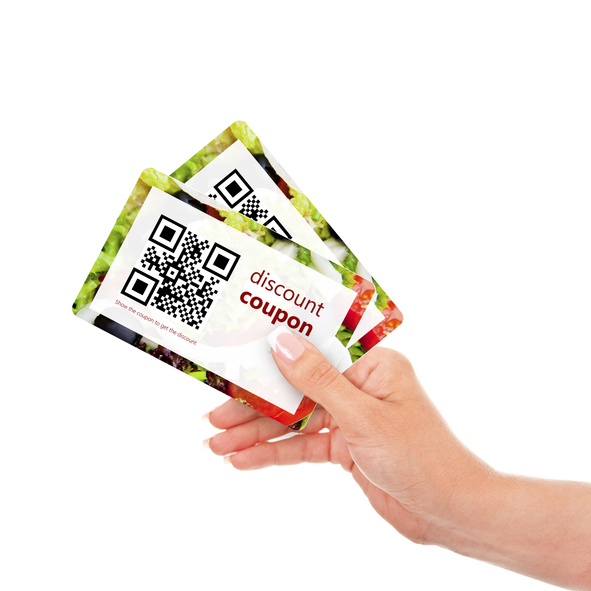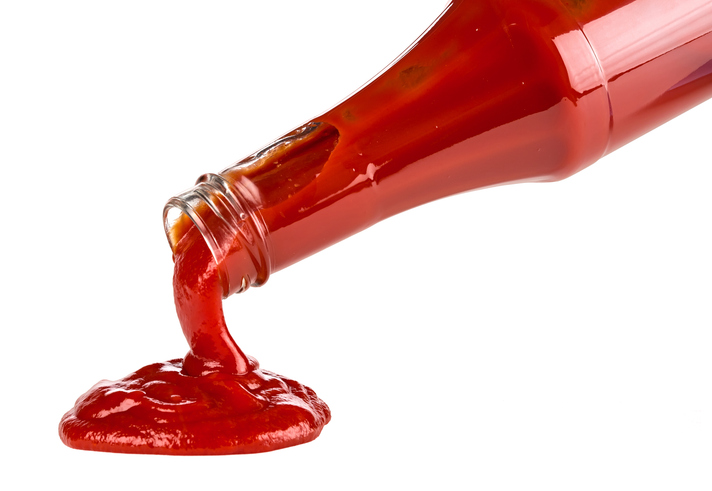While print marketing requires an upfront investment, the rewards are worth it! When you want to convince potential print buyers this is true, consider sharing these five examples of successful print marketing campaigns.
Jersey Mike’s: Creative Coupon Promotions
Breaking into a new market is tough, and the restaurant industry is no exception.
When Gerrit Curran and Emily Wessner opened a Jersey Mike’s Subs in Muhlenberg Township, Pennsylvania in 2019, they used coupons with a twist to attract patrons and build customer loyalty. To gain traction in their township of 20,000, they recognized the power of anchoring their business to a community connection.

During the Grand Opening, the Jersey Mike’s staff distributed over 7,000 sandwich coupons in the community, inviting people to enjoy a free sub but also to donate the cost of that sandwich to the Muhlenberg Township Athletic Association. In total, the promotion helped to raise over $15,000 and cemented Jersey Mike’s as a committed community partner.
Press: Direct Mail Marketing + Targeted Social Media Ads
Press, starting as an Austin-based business, puts a modern spin on laundry and dry cleaning. Its convenient app allows users to schedule direct-to-door laundry pickup and delivery. Now spread across 30+ cities, Press has allowed people to enjoy punctual service at the tap of a button.
When Press wanted to build their base and widen their reach, they needed to explore direct mail advertising options. Using Every Day Direct Mail® (available through the United States Postal Service®), Press Growth Manager Jake Lane said the combination of zip code driven EDDM mailings and targeted social media ads was perfect for their business:
“We recently just ended an [EDDM] direct mail campaign here in Austin with a small pilot run of over 20,000 mailers in targeted ZIP Codes. Unlike standard brick and mortars, we have the ability to track ROI by driving leads through a specific URL and tracking website traffic for the campaign. We found that direct mail to the right zip codes paired with targeted social media ads provided the best bang for the buck. We were able to recoup our cost and go ROI positive on the campaign by also putting an expiration date on our promo. This entices the recipients to act sooner rather than leaving the mailer in their kitchen drawer, or worse, the trashcan.”
Heinz Ketchup: When Print Boosts Digital
In a push to regain market shares and boost customer loyalty, Heinz asked people in spontaneous settings to do one thing: “Draw ketchup.”

Amateur artists from 18 countries did not disappoint. Most drew a bright red bottle, some sketched the Heinz label with its iconic vine-hanging tomato, and some even drew the No. 57 on the bottle neck.
Heinz amplified the wackiest images, turning them into magazine ads, outdoor advertising, funny online videos, and even featuring some on a limited run of Heinz bottles.
Participants experienced nostalgic joy and Heinz did too, seeing a near 1500% uplift in social conversations about the brand and a 12% boost in sales. This unforgettable campaign is a testament to the power of omnichannel marketing, the experiential impact of print and paper, and the emotional connections people have with labels and branding.
Titan Travel: Personalized Brochure Mailings
Titan Travel is a UK holiday specialist providing award-winning travel across seven continents.
Because its travel brochure is essential in its sales process, Titan decided to test whether personalization would drive additional sales. Using mood-boards and key customer metrics to group clients into segmented personas, the brand tweaked brochures for individual clients with angles like interest areas, personality and design preferences, tone of voice, and front brochure covers (chosen from 34 different images) that reflected the customers’ “next most likely” product to be purchased. Covers featured each customer’s name, inserts featured their last Titan purchase, and CTAs were tailored to previous purchasing methods (like digital booking versus a personal sales consultation).
Results were staggering. From 30,000 mailed brochures, the company generated an ROI of 37:1 – an increase of 533% compared to non-personalized brochures!
Patagonia: Thought-Provoking Print Ads
Since the creation and growth of its outdoor clothing and adventure apparel, Patagonia fought to establish itself as a “conscientious” brand, one committed to sustainability, environmental care, and activism.

In a Black Friday plot twist, the brand ran a New York Times ad featuring a Patagonia jacket photo with a giant headline that said, “Don’t Buy This Jacket.” The ad challenged readers to reevaluate their spending habits by prioritizing quality over quantity and reimagining a world with less waste. A subtler message was shared too: If buyers chose to purchase the item, they could do so in good conscience, knowing the jacket was made to last and the company would take back used coats later to recycle them into products of equal value.
Ads like this set Patagonia apart as a thought leader, drove readers to its “Common Threads” landing page, and solidified its business strategy – prompting buyers to reject “fast fashion” in favor of its own durable, high-priced alternatives. This memorable campaign caught the world’s attention and eventually helped the brand triple profits over a six-year period.
Harness the Power of Print
The results speak for themselves.
By integrating print into their marketing strategy, brands can boost engagement, build consumer trust, and partner with the quick reach and adaptability of digital marketing. This holistic approach resonates with people everywhere in authentic, innovative ways.


